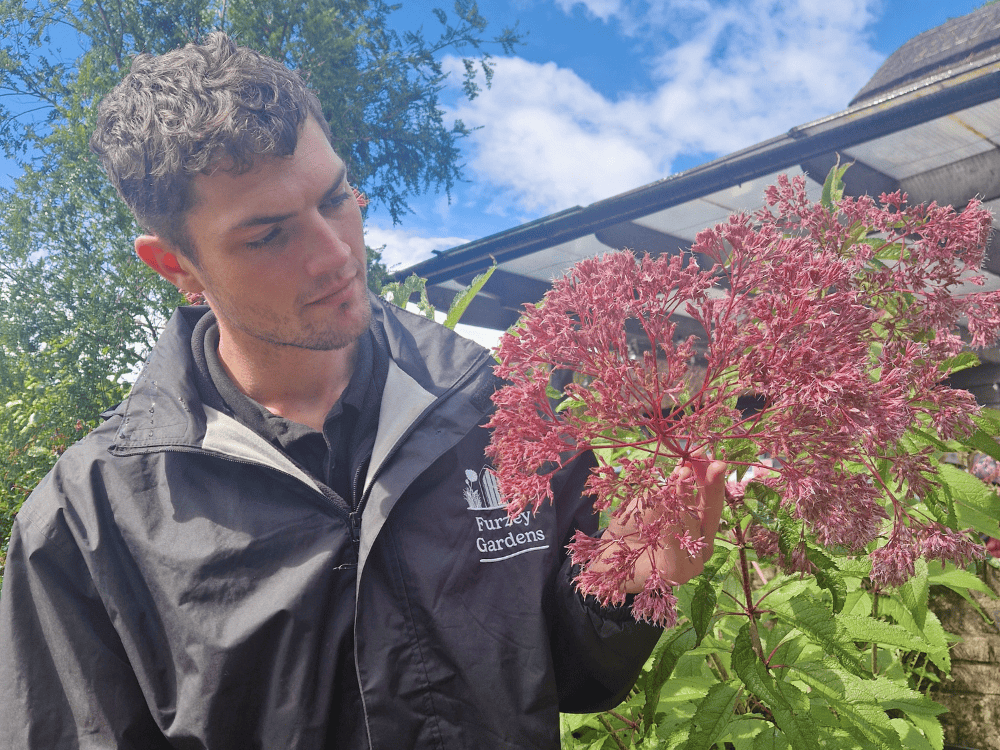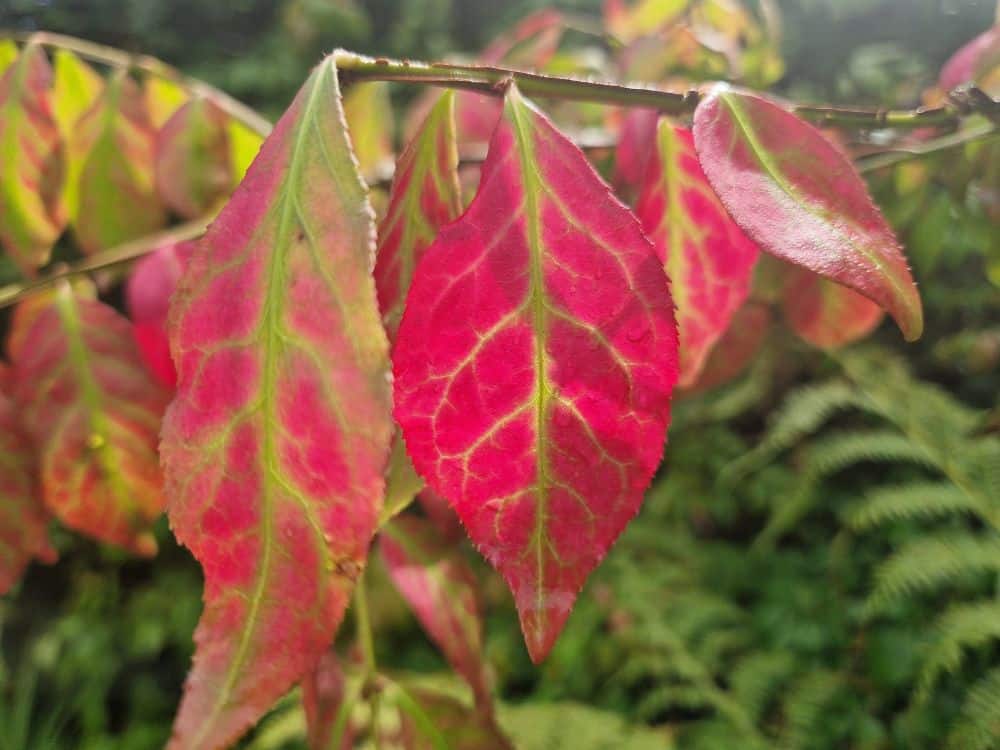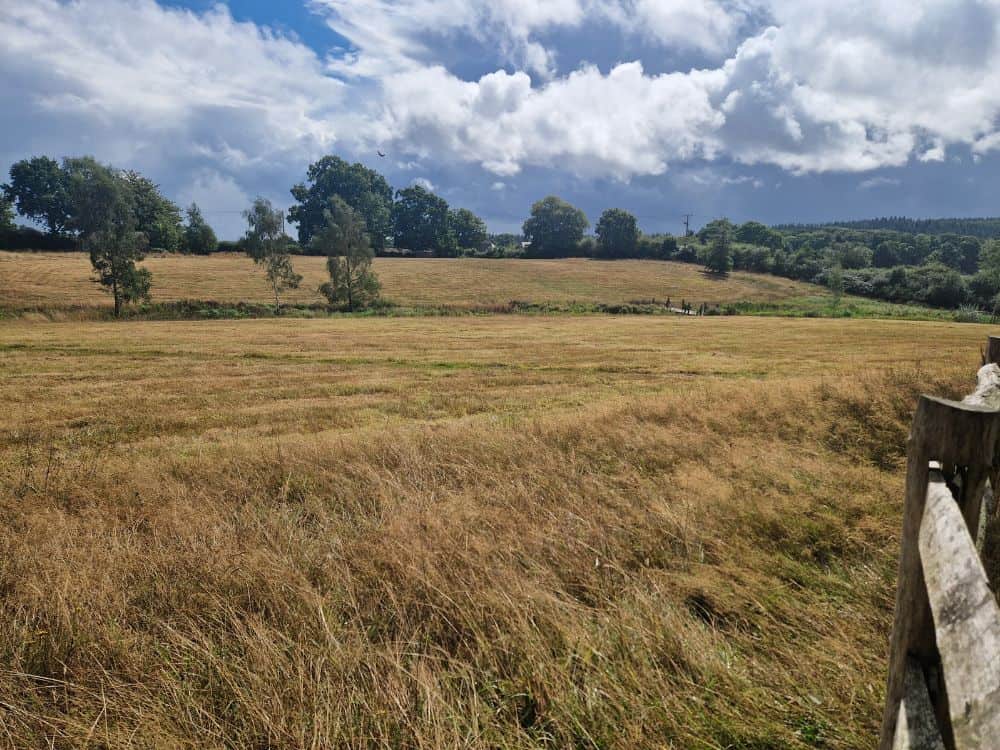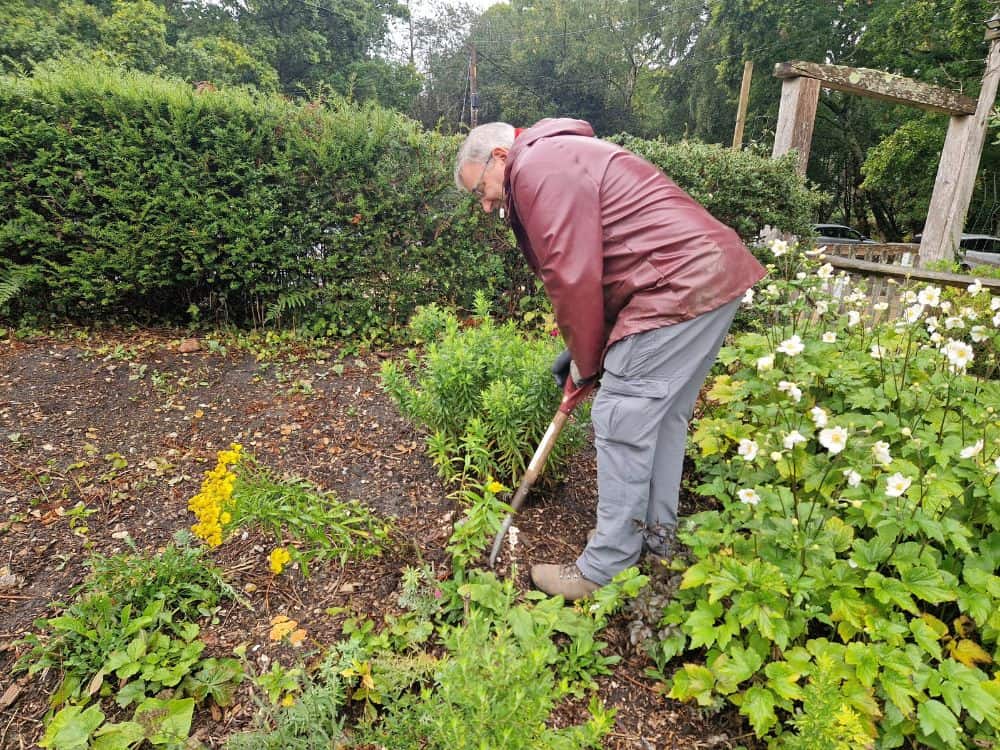Gardening tips and advice: September 2025
After a long, dry summer, September has arrived with welcome showers and cooler days. The garden begins to settle into a gentler rhythm, yet there’s still much care we can offer each border and bloom.
At Furzey, Asters and Heleniums add crisp touches of late-summer colour to borders, whilst the berries on Malus and Sorbus glisten, inviting birds to feast in the months ahead. It’s a time for thoughtful pruning, planting, and planning, so the seasons to come holds new promise.So whether you’re pruning in the shade or planting in the early evening cool, here are our tips for keeping your garden flourishing this August.
This month our gardening advice is brought to you by the gardening team which includes supported gardeners with learning disabilities. Connor, our assistant gardener has some great tips for you to put into practice in your own garden spaces.
Deadheading and cutting back
Now’s a great moment to deadhead spent flowers and stem growth that’s exhausted its energy, especially those that flowered through spring into summer. Tidying early redirects the plant’s strength into root growth rather than seed production.
As Connor explains:
‘Pruning herbaceous and perennial plants helps them go to sleep throughout winter, ready to wake up in the spring.’
A simple job now can bring long-term benefits and keep your borders looking calm and cared for as autumn arrives.
Not all herbaceous perennials need to be cut back though. Consider leaving those with attractive seed-heads such as Achillia, Echinops and Fennel to add interest to your borders overwinter. Additionally some perennials, like delphiniums, have hollow stems and are ideal shelters for overwintering insects, so once flowering is over leave a few stems to support wildlife and seasonal texture in the garden.

Connor Assistant Gardener admiring Eupatorium

Asters in front of 16th Century cottage border
Harvest and share the final tastes of Summer
If you’re growing vegetables, September still offers plenty to pick. Tomatoes, beans, squashes and the first apples are often at their best now. Keep an eye on ripening fruit and harvest little and often. Any excess can be preserved, shared or frozen, because a good harvest is always better when it’s shared.
Plant for Spring
Connor also reminds us that September is a good month to:
‘Replant your bulbs ready for spring, now is a good time to plant daffodils, snowdrops and crocuses.’
If the ground is feeling a bit hard and dry, there are tools like bulb planters that can make the job easier. It can be tempting to wait for rain, but don’t delay – daffodils, snowdrops and crocuses are best planted during September and October. Tulips respond better being planted in colder months such as November and even early December, when the ground is much cooler. Planting them too early, while the ground is still warm, increases the risk of fungal diseases such as tulip fire (Botrytis tulipae), which causes distorted leaves and scorched looking flowers. By waiting for cooler conditions, the bulbs can settle in safely and are far less likely to be affected, giving stronger, healthier blooms during spring time.
Divide and rejuvenate
September is ideal for lifting and dividing herbaceous perennials that are overcrowded or flagging. Plants like Geraniums, Astrantia, Alchemilla, and Primulas will thank you for it. Dividing plants produces healthier clumps and more flowers in future seasons.
At Furzey, the team have recently been dividing Eupatorium Maculatum, a tall, late-summer perennial much loved by pollinators and visitors alike. These divided clumps will be nurtured in the plant nursery for future use or sale. Water well after replanting and, if the weather is still warm, provide a little shade while they settle in.

Bee enjoying Eupatorium

First autumn leaves of Euonymous Alatus
Meadow care and wild spaces
‘At Furzey we have also been cutting the meadow and letting the wildflower seeds drop ready for next year.’ Connor explains one of the seasonal tasks we have recently been undertaking:
If you have wild patches in your own garden, now is the time to cut them back. But remember: it’s important to remove the cut material rather than letting it rot down. Wildflower meadows thrive on nutrient-poor soil. Leaving grass clippings can enrich the soil too much and reduce future diversity. By clearing away cuttings, you give wildflowers the best chance to return and in doing so, you’ll be helping to support local biodiversity right on your doorstep.
Plant shrubs and trees for stronger roots
Early autumn is ideal for planting new shrubs and trees. The soil is still warm enough to encourage root growth, while the cooler air reduces stress on young plants. Whether you’re adding structure with evergreens or introducing late-season colour, planting now gives new additions a head start before winter sets in.
Prune with care
- Wisteria, Philadelphus, and Deutzia: Cut back summer growth and spent flowering stems to shape the plant and encourage buds for next year.
- Rambling and climbing roses: Prune out one or two of the oldest stems and tie in new shoots to keep your plant healthy and manageable.
- Evergreen hedges: Give them a final light trim this month to neaten shapes before winter.
What to enjoy this month at Furzey
In September, the garden begins its gradual shift – but there are still late flowering perennials such as Aster, Rudbekia and Helianthus to enjoy. Our Hydrangea Paniculata ‘Limelight’ lights up the garden with its soft green-white blooms, bringing a fresh brightness that feels a little magical as the seasons turn. The berries on Malus and Sorbus are full of autumn promise – and birds are starting to take notice.
Visit Furzey in September and look out for Leycesteria formosa (Himalayan Honeysuckle) its pendulous white flowers and red-purple bracts. You may also notice the early stages of a new project that we have started in our cottage garden. The border has been in need of a little attention as some of the plants have struggled in the dry and hot weather this summer. Over the Autumn and Winter months we will be redeveloping this border and introducing a new planting scheme that is more resilient to our changing weather patterns. Some of the plants we will be incorporating into the new design are Stipa Gigantea, which will lift the border with it’s tall, golden-oat like plumes Perovskia ‘Blue Spire’ adds clouds of silvery stems topped with violet-blue flowers, giving the border a soft haze of colour and fragrance. Finally, Gaura ‘Whirling Butterflies’ adds a light, airy touch with its dancing white blooms, like a cloud of tiny butterflies fluttering through the border. We’ll keep you updated as this project develops.
We hope to see many of you for a visit in the gardens this month, whether it’s a stop at a quiet bench, pause beside a border, or simply taking in the stillness around you. September at Furzey offers a chance to relax, recharge and reconnect. Let the garden do the talking, and give yourself the space to just breathe.

Wildflower meadow after cut

Digging up the cottage garden border
We hope to see many of you for a visit in the gardens this month, whether it’s a stop at a quiet bench, pause beside a border, or simply taking in the stillness around you. September at Furzey offers a chance to relax, recharge and reconnect. Let the garden do the talking, and give yourself the space to just breathe.
This article originally appeared as the monthly In The Garden column in the Lymington Times, buy the paper on the second Friday of every month to read the next column first.
